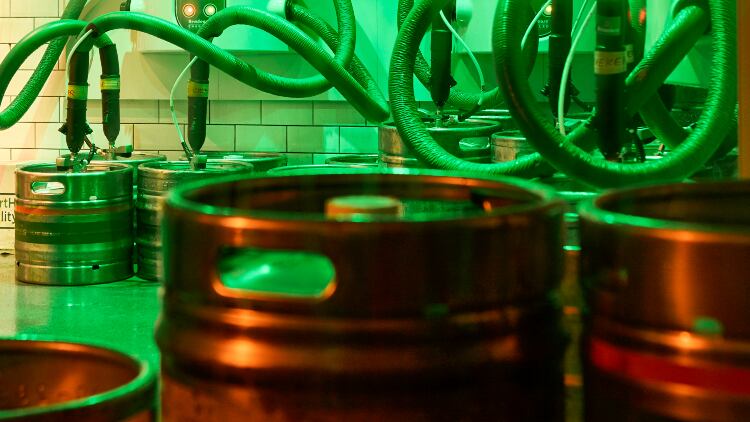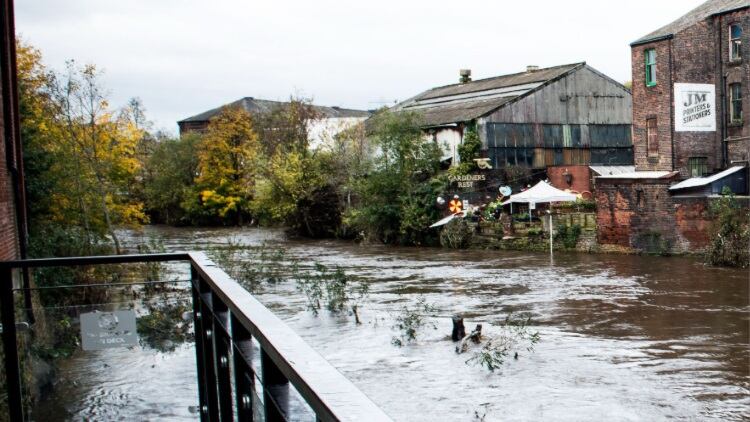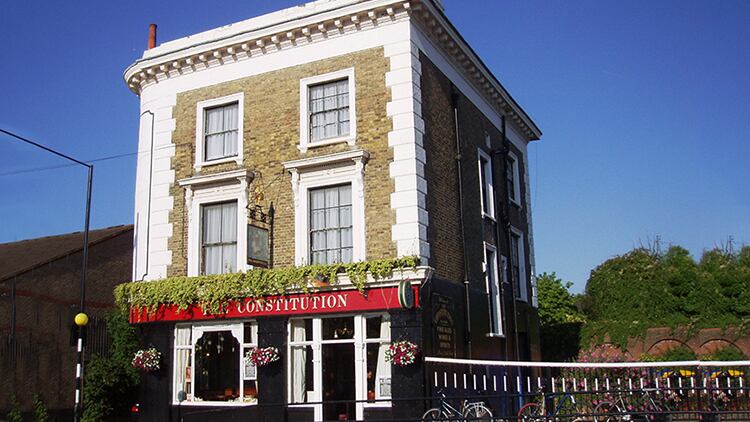The cellar is the heart and engine room of any pub. A well-kept cellar can mean the difference between a profitable business and one that sees customers voting with their feet. No customer is going to stick around if the beer is not hitting the mark. But it is surprising how many licensees focus on keeping the main trading areas at the front of house in tip-top condition while overlooking the cellar – to the detriment of the business.
According to the Vianet Insight Report: The Profit Opportunity Through Game Changing Insight, one in three (29%) pints of beer in pubs are served through unclean lines with an estimated loss of £593m in profit each year through ‘substandard’ beer quality. It also found that 22% of sites in the UK served beer at the wrong temperature.
More profitable
This data is backed up by more recent research in The Cask Report 2019, which revealed having good cellar practices improves yields by 7%, and good beer quality adds 3% to beer sales. This can add an extra £5,500 to the average pub’s bottom-line.
During the past couple of years, Cask Marque has undertaken more than 7,000 cellar audits called Scores on the Doors, with 50% of pubs receiving ratings of three stars or below. Pubs failed in a number of areas, such as keeping the cellar temperature between 11 and 13°C, line cleaning, glass cleanliness and failing to keep the water levels in the ale pythons topped up regularly.
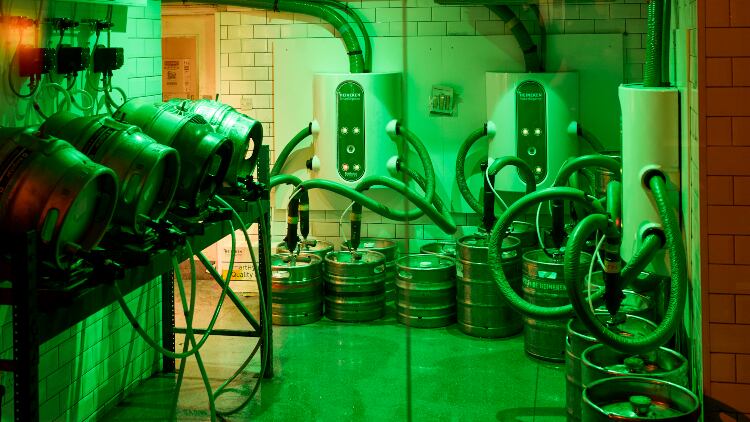
Simple practices
Cask Marque director Paul Nunny says that most of the failures occurred through simple cellar practices.
“Having the cellar temperature right is pretty simple and there is no skill there. Cleaning your beer lines does involve a skill but are they doing it properly?” Nunny argues.
“We found from The Cask Report that licensees think they know what they are doing but actually it is not best practice.”
Cleaning regimes
Nunny suggests training staff, giving them responsibility for the cellar and helping them to understand the care and attention that goes into the beer will help improve quality.
He also advises annual maintenance on equipment, not storing food in the cellar because odours can get into the beer, and keeping cellars tidy and regularly cleaned “such as you would do in a kitchen”.
Innserve key account manager Steve Lakin agrees and says that a “sure-fire way” to lose customers is by neglecting the cleaning regime because beer served through unclean lines can be cloudy and flat, leaving a sour taste in the drinker’s mouth.
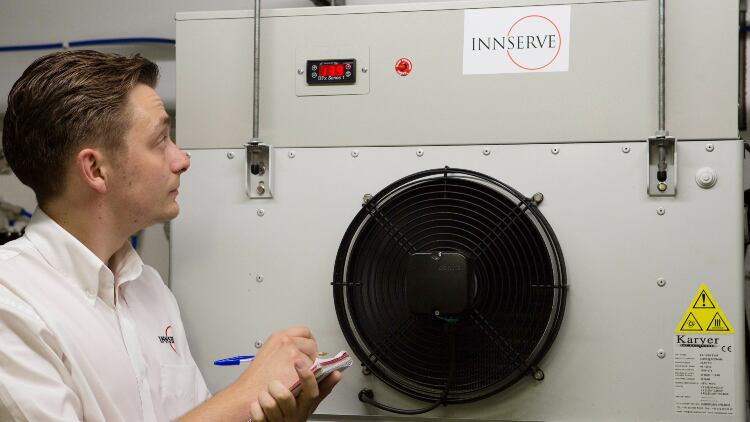
Help from technology
However, he recognises that line cleaning can be time consuming and costly for the licensee.
“Thankfully, technology exists that can help maintain hygiene standards while reducing both workload and wastage by prolonging line cleaning intervals – from a week to between three to five weeks,” he says.
“This technology ensures continuous cleaning by inducing a constant electromagnetic field within the whole length of the system, preventing scale, bio film and bacteriological growth and killing approximately 70% of bacteria.”
Jeff Singer, commercial manager for Beer Piper, the beer line cleaning system, agrees that technology, such as its own system, which ensures that beer lines are cleaned at regular intervals, can help the busy licensee.
Accurate reporting
Its BP4 system logs when and who cleans the lines, and its app allows bar managers and owners access to real-time data as and when they need it.
“Bar managers and landlords are guaranteed a quality clean due to the advanced tech that will accurately dose chemicals, soak, pulse and then flush all beer lines. There is no cutting corners,” he says.
“If you try to stop the program or ‘buck’ the system, it will be reported on the back office reports – which can be accessed via a mobile phone app, that uses cloud-based technology.”
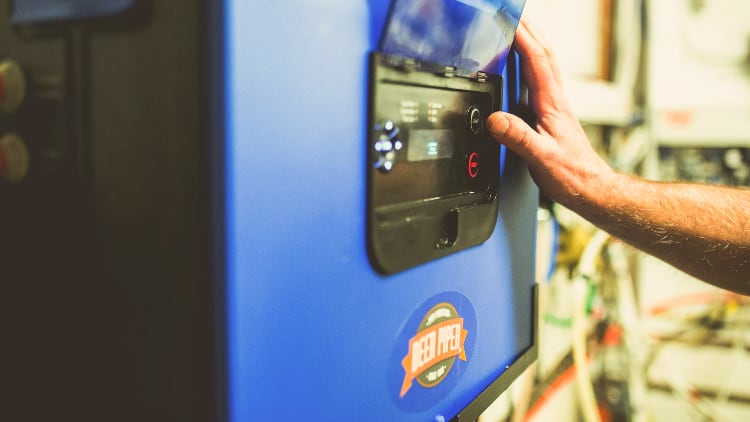
Avoid bad habits
Chemisphere business development executive Hance McGhie admits even licensees with experience in line cleaning can sometimes need that extra help.
“Even when you have people that have been in the game for 20 to 30 years, they still do things wrong. You pick up bad habits,” he says.
Chemisphere, he confirms, was the first company to launch a purple line cleaner called Pipeline Professional, which turns green when cleaning and then returns back to purple when the line is fully cleaned.
Size matters
McGhie argues that it really depends on the size of the venue and the volume of beer sold when it comes to how often a pub should clean its beer lines.
“We have got a chemical that cleans the line every two weeks because licensees are worried about the wastage,” he says.
“But licensees sometimes leave it up to four weeks. Then they wonder why they are getting a lot of fobbing, the beer quality is poor and people keep handing drinks back.”
He also advises that every pub should clean the couplers that connect onto the kegs, the cleaning sockets, and beer nozzles with sanitation tables and not soda water. A deep clean every eight to 12 months will also help to keep the cellar in good condition, he advises.
Jewel in the crown
Training for licensees, managers and staff on the importance of the cellar is crucial, especially with the high turnover of employees in the sector.
“It is one of those things that some people will keep on top of it and enjoy. But nine times out of 10 it is still the last thing anyone wants to do,” he says.
“What is in the cellar is their jewel in the crown and, if they don’t look after that, they won’t have enough people coming back.”
There is no doubt that technology can help the licensee with their cellar management.
Heineken’s own SmartDispense system was designed to save outlets time and money by removing the need for cellar or under-bar cooling systems.
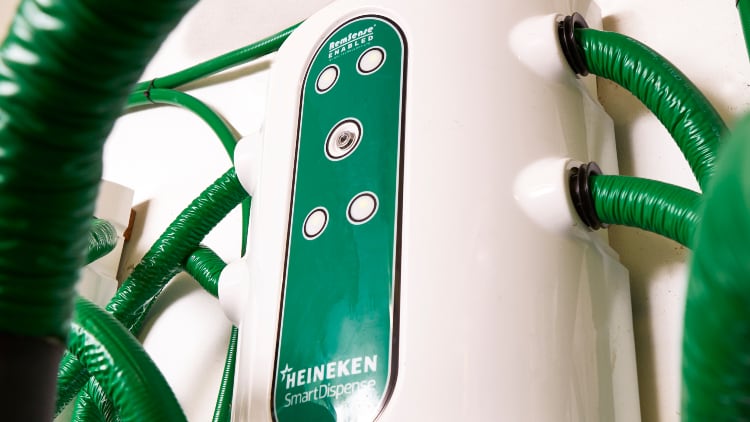
SmartDispense system
Heineken UK says in the five years since its launch, it has saved 72m pints of water and 207 tonnes of CO2 – the equivalent required to pour 43m pints.
“In part, this is due to the unique cooling and insulation in the system from keg to tap, which keeps cider and beer below 3°C, meaning it’s kept cleaner for longer,” says Jerry Shedden, category and trade marketing director at Heineken UK.
“As a result, SmartDispense technicians clean the lines once a month as opposed to the weekly clean required in standard systems, saving both time and water, while retaining the all-important quality of the serve.”
He says the system also has the benefit of reducing water and line clean chemical use by 75% as well as beer and cider wastage by 75%.
The Star Inn in Bath – a Star Pubs & Bars lease – is one pub that has benefited from using the SmartDispense cellar technology.
“SmartDispense has taken away the faff of the weekly cleaning of the beer lines. The system is very simple to use and hasn’t changed the fundamental way the cellar works,” confirms John Ingall, who runs the pub on behalf of Abbey Ales.
While his keg lagers, cider and Guinness are all run with the system, this leaves him more free time to focus on his real ales, which are more complicated to store and serve.
“I am free to worry about the ales and make sure the live product that is in the line is spot on,” he says.
Monitoring equipment
While technology can revolutionise cellar management, it can also help with the whole relationship between cellar to glass.
Derek Plimley, director of beer monitoring equipment supplier Seaflo, says it can be a real help to the licensee in keeping the cellar and beer in good condition.
“My problem is that I go to the average publican and say I am doing beer monitoring equipment they get out the crucifix,” he says.
Despite the bad reputation that beer monitoring equipment has had in the past, the Seaflo system allows each pub to monitor live sales as it is integrated with the EPoS system. As well as being able to monitor beer wastage, such as overpoured pints, it can also monitor if pints are being poured without the payment going into the till. This, in turn, can give licensees a steer on where they need to focus their training and monitoring.
“It is about having that sharp-end information,” he says. “We separate wastage from shrinkage. As long as beer is at the right temperature that is not too difficult. Then it is about pouring and staff training particularly with cask beer.”
Keeping that engine of the pub pumping needs constant attention and maintenance.
With the advances in technology there is help for the licensee to ensure this is an easier process. But keeping the cellar clean, the lines regularly attended to, using the right kits and having procedures in place can ensure a good pint and a stronger bottom line.

